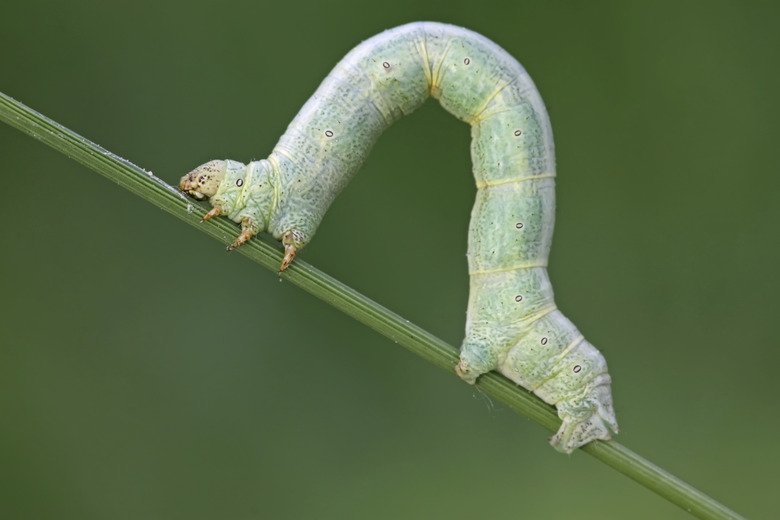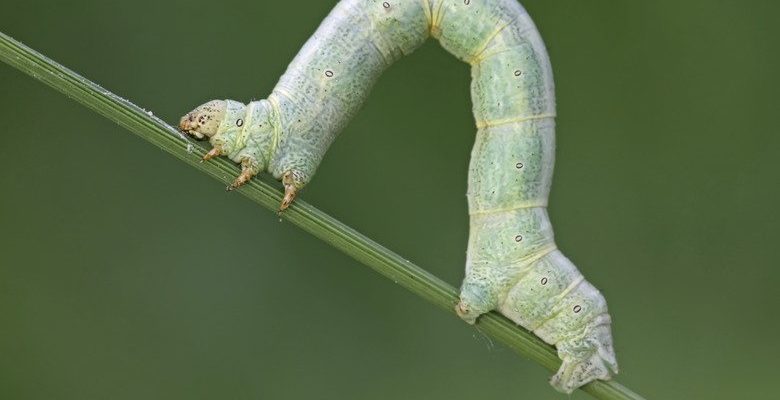
Understanding the lifecycle of inchworms can be as captivating as watching them wiggle along a twig. Just like how a butterfly undergoes a metamorphosis, inchworms have their own journey that involves significant transitions. To truly appreciate these small but mighty creatures, it’s important to understand their larval stage, how long it lasts, and the factors that influence it. So pour yourself a cup of coffee, and let’s explore the amazing world of inchworms!
What Exactly Are Inchworms?
Before we dive into how long inchworms stay in the larval stage, let’s clarify what they are. Inchworms are the larval stage of various moth species, primarily belonging to the family Geometridae. They get their name because of their unique way of moving: they appear to measure their length as they “inch” along.
You might be wondering what makes these little guys so interesting. Inchworms are masters of disguise. They often mimic twigs or leaves, blending seamlessly into their environment to avoid predators. These clever tricks allow them to survive despite being rather defenseless.
Inchworms generally have a short lifespan as larvae, but their time spent in this stage is crucial for their development into adult moths. Now, let’s get into the nitty-gritty of how long this larval stage lasts!
Understanding the Lifespan of Inchworms
The lifespan of an inchworm during its larval stage typically lasts anywhere from three weeks to several months. This period varies depending on several factors, including species type, environmental conditions, and food availability.
For most species, the ideal conditions like warmth and plenty of food can lead to a quicker transition into the next stage of development. In contrast, if the weather is chilly or food is scarce, they might take their sweet time. Think of it like being stuck in rush hour traffic versus cruising down a clear highway—some days, you just have to wait it out.
Inchworms will feed voraciously on leaves, making sure they gather enough energy for their eventual transformation into moths. So, their growth rate can vary significantly based on their food supply and the climate around them.
Factors Affecting the Larval Stage Duration
Let’s explore some factors that affect how long inchworms remain in their larval stage. Here are a few major elements to consider:
- Temperature: Warmer weather typically accelerates growth. If it’s too cold, inchworms tend to slow down—much like how we might snuggle under a blanket on a chilly evening.
- Food Availability: If they have a buffet of leaves to munch on, inchworms will thrive and grow faster. But if they’re struggling to find food, they may linger as larvae longer.
- Species Variation: Different species of inchworms have unique lifecycles. Some might transition quickly, while others may take their time. It’s like how some people breeze through high school while others take a little longer!
Understanding these factors can help you predict when you might see inchworms transform into their adult forms. It also highlights the delicate balance of nature and how fragile these creatures’ lives can be.
How Do Inchworms Transform Into Moths?
So, once inchworms have had their fill and grown enough, what happens next? The transformation process begins! When they’re ready, inchworms will look for a snug spot to pupate, often attaching to tree bark or hanging from a silk thread.
Inside the cocoon, the inchworm undergoes an incredible transformation. Essentially, they break down their larval body and reconstruct themselves into a moth. This is a process called metamorphosis. It’s kind of like a superhero reassembling themselves into a new form to battle the challenges of the world.
The time spent in this pupal stage can also vary and may last from a couple of weeks to several months, depending on temperature and species. Once this transformation is complete, the adult moth emerges, ready to flutter into the world! Understanding this progression is a key piece of appreciating the lifecycle of inchworms.
Why Should We Care About Inchworms?
Now that you know how long inchworms stay in the larval stage and their transformation process, you might be wondering why this is significant. Inchworms play an important role in the ecosystem. They serve as a food source for birds and other wildlife, making them a vital part of the food chain.
Additionally, inchworms help control plant growth by feeding on leaves. While they can be seen as garden pests, they also help create balance in nature. Observing their lifecycle can teach us about resilience and adaptation. Plus, studying these little guys is a fun way to connect with nature!
Concluding Thoughts
To sum it up, inchworms typically stay in their larval stage for about three weeks to several months, depending on various environmental factors. Their fascinating transformation into adult moths is a true celebration of nature’s creativity. So, the next time you see an inchworm inching along, remember the remarkable journey it’s taking to grow up and become a moth.
We all share this planet, and learning about even the smallest creatures can deepen our appreciation for the intricate web of life around us. Happy exploring!

